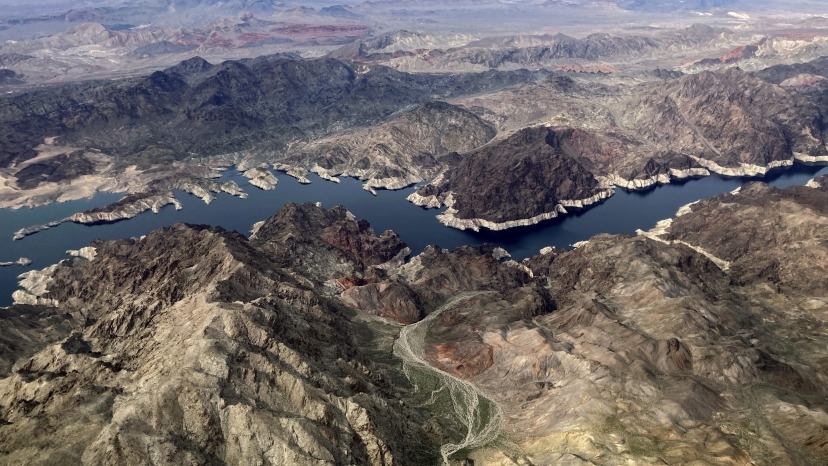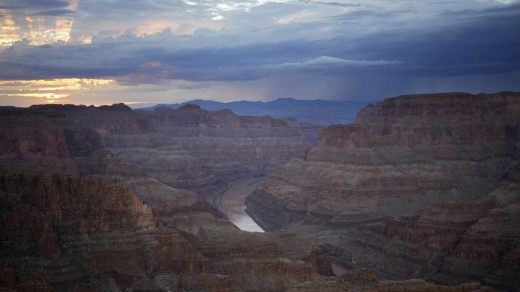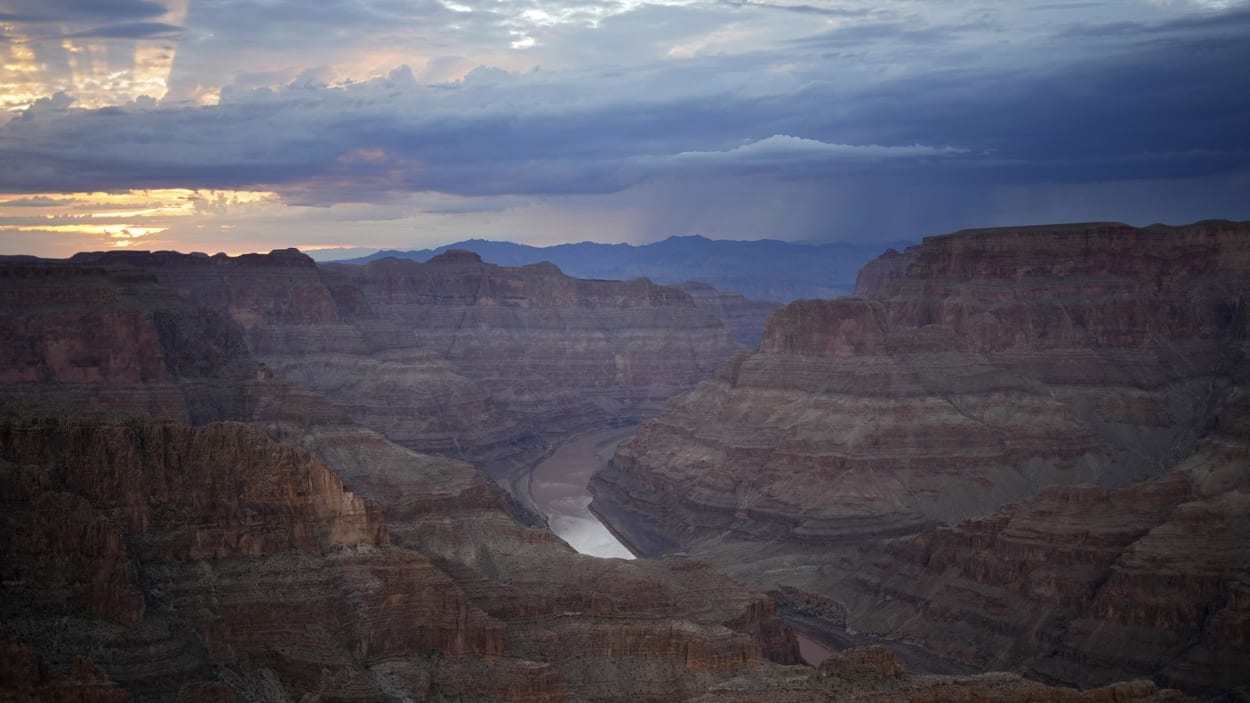Feds will let Western states use more water from the Colorado River—for now
WASHINGTON (AP) — Federal officials said Tuesday they will ease water cuts for Western states reliant on the Colorado River in 2024, thanks to a slightly improved outlook, but long-term challenges remain.
The river serves seven U.S. states, Native American tribes, and two states in Mexico. It also supports a multibillion-dollar farm industry in the West and generates hydropower used across the region. Years of overuse by farms and cities, and the effects of drought worsened by climate change has meant much less water flows today through the Colorado River than in previous decades.
The U.S. government announces water availability for the coming year months in advance, so that cities, farmers, and others can plan. The first mandatory cuts that magnified the crisis on the river went into effect in 2022, followed by even deeper cuts this year due to drought, poor precipitation, and less runoff from the headwaters in the Rocky Mountains.
Conservation measures and a wetter winter have improved the river’s health, leading to cuts being dialed back, starting in January. It won’t lead to dramatic changes because those affected have been living with water cuts for two years—or are voluntarily conserving water.
WHAT CUTS WERE ANNOUNCED?
The Bureau of Reclamation uses the water levels at Lake Powell and Lake Mead as measures of the river’s health. Once Lake Mead drops to a certain point, water reductions are enacted for Arizona, Nevada, Mexico, and—much later—California.
Bountiful snowfall and rain pulled much of the region out of drought this spring and raised water levels at the reservoirs, though not enough to avoid mandatory reductions altogether.
Still, water users are intent on creating a safety net in Lake Mead and will pull out less in 2024 than in other years because of conservation and other voluntary efforts.
The reductions announced Tuesday are in the same “Tier 1” category that were in effect in 2022. That means Arizona again will mark an 18% cut from its total Colorado River water allocation, down slightly from this year.
Nevada receives far less water than Arizona and California. Its reduction will be down slightly from this year. Mexico’s allocation goes down 5%.
California has not faced any forced-water cuts yet, based on its legal status as a high-priority user.

WILL THE RIVER KEEP GETTING HEALTHIER?
No. Recent snow and rain were a welcome relief, but the river is stressed by hot, dry temperatures and demand.
Lake Powell and Lake Mead, the largest of the Colorado River reservoirs, remain low, at about 39% and 33% full, respectively.
“That is a little better than last year but still extremely low. It only takes a few dry years to set us back,” said Kim Mitchell, senior water policy adviser at Western Resource Advocates.
ARE DEEPER CUTS COMING?
Yes, but not immediately. This week’s announcement is just one piece of various water-savings plans already in place or being negotiated.
Earlier this year, Arizona, California, and Nevada released a plan to conserve an additional 3 million acre-feet of water through 2026 in exchange for $1.2 billion from the federal government. An acre-foot of water is enough to serve two to three households annually. The Interior Department is expected to release its analysis of the proposal this fall and finalize the plan in 2024.
Similar agreements also are playing out.
The Gila River Indian Community in Arizona agreed in April not to use some of its river water rights in return for $150 million in federal funding and money for a pipeline project. The tribe gets Colorado River water through the same aqueduct system that delivers river water to Arizona’s major cities.
Jason Hauter, a tribal member and water attorney said Tuesday’s announcement wouldn’t be a big swing one way or another when it comes to water use on the reservation.
WHAT ABOUT WESTERN FARMS?
Farmers use between 70% and 80% of all water in the Colorado River system, but Tuesday’s announcement will not change much for most of them.
One farming district in Arizona’s Pinal County outside of Phoenix lost almost its entire Colorado River water supply in 2022, and the district won’t get it back.
Instead, farmers have turned to groundwater or left fields unplanted. As much as half the farmland has been fallowed in the past two years, said Brian Yerges, general manager of the Maricopa-Stanfield Irrigation and Drainage District, which serves the region.
WHAT ABOUT CITIES?
Major cities are unlikely to be impacted by Tuesday’s announcement. Phoenix, for example, has a mix of water from the Colorado, and the in-state Salt and Verde rivers, along with groundwater and recycled wastewater that it uses to serve residents in the fifth-largest U.S. city.
In the Las Vegas area, ornamental lawns are banned, swimming pool sizes are limited, and almost all water inside homes is recycled, limiting the impact of water cuts. The Southern Nevada Water Authority said strict conservation measures will continue.
The Metropolitan Water District of Southern California, which supplies nearly 20 million people, lifted water restrictions in March for nearly 7 million people. The district draws from rivers in Northern California that swelled with spring runoff, as well as the Colorado River.
WHAT’S NEXT?
Guidelines in place for doling out Colorado River water are set to expire in 2026.
“We have a generational set of agreements coming up,” said Bill Hasencamp, manager of Colorado River resources for the Metropolitan Water District of Southern California. “That’s where we need to focus.”
Discussions among states, tribes, and the federal government about their priorities for the river after 2026 are just starting. Mexican negotiators will engage in a similar but parallel process with U.S. officials.
Negotiators say long-term discussions will be geared toward living with significantly less water in the system.
“We had a good year,” said Anne Castle, U.S. Commissioner to the Upper Colorado River Commission. “But no one expects that’s going to be the new normal. The question is, ‘What’s the plan for the future?’”
— Suman Naishadham, Associated Press
Associated Press writers Ken Ritter in Las Vegas and Amy Taxin in Orange County, California, contributed.
(8)



